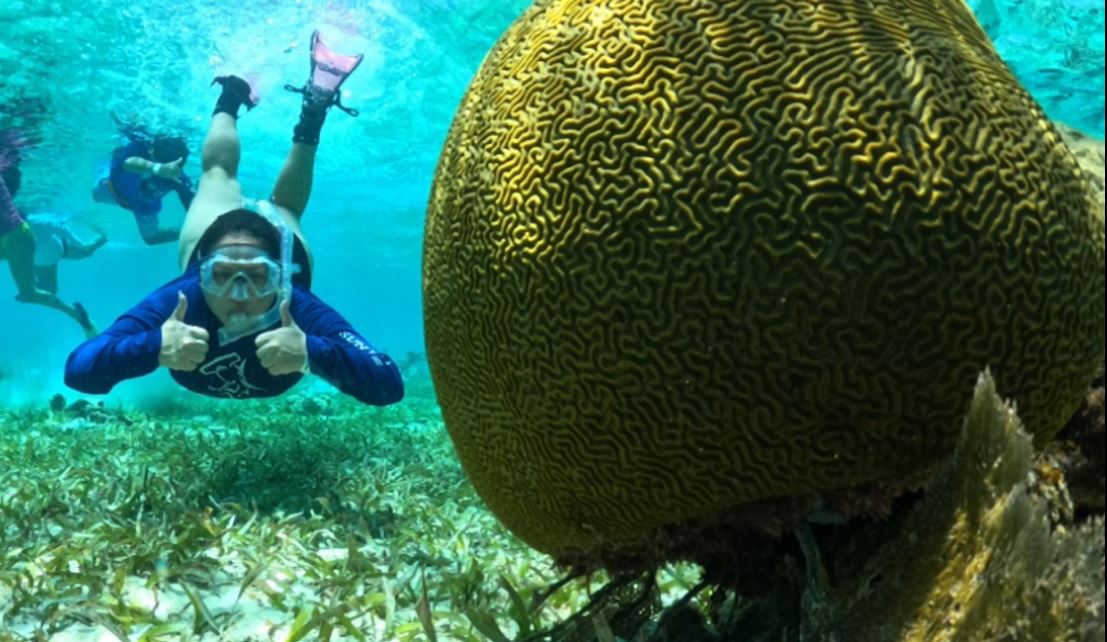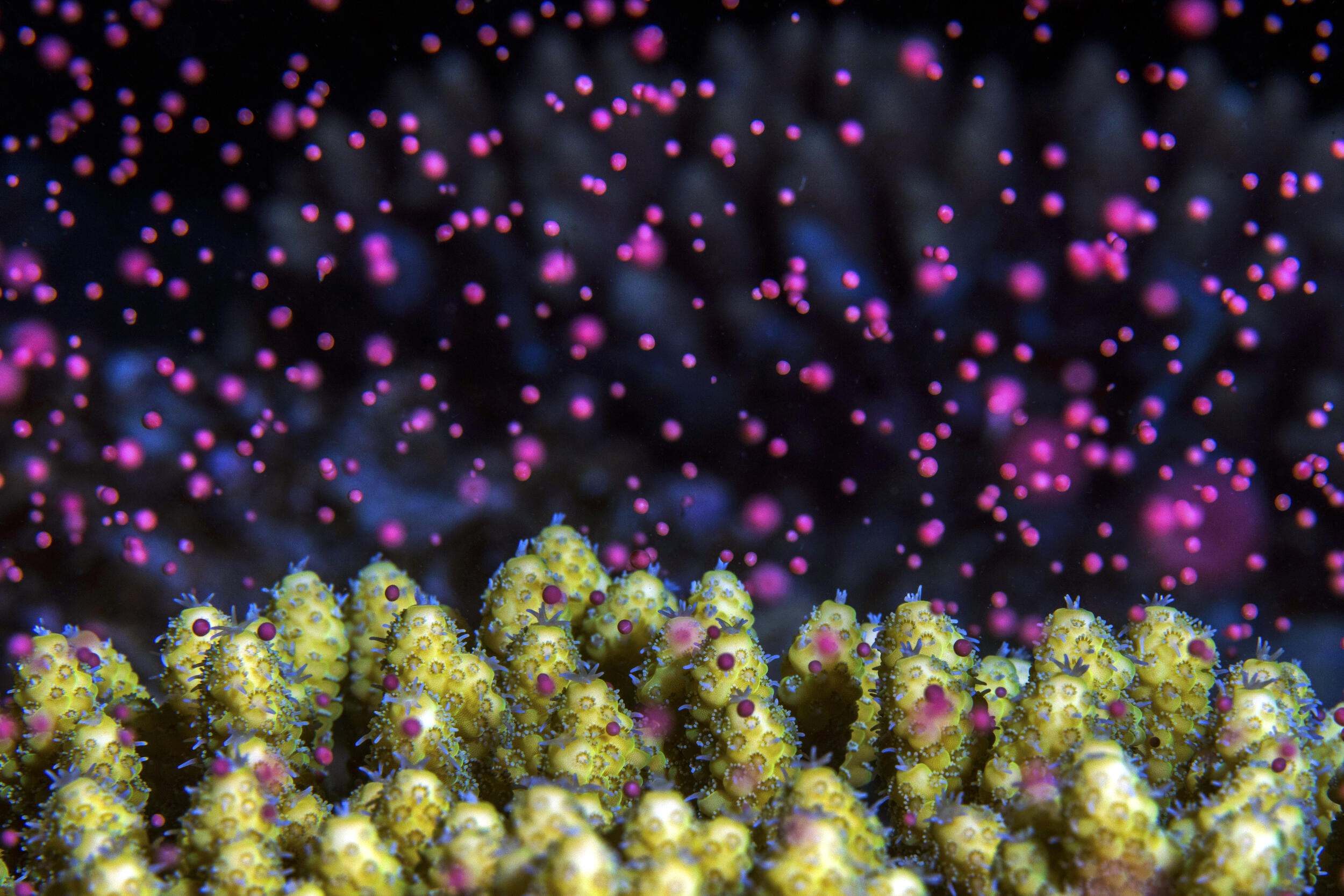Pro-active Approach to Combat the Invasion of the Indo-Pacific Lionfish by the Bonaire National Marine Park
Location
Bonaire, Leeward Antilles, Caribbean Sea
The challenge
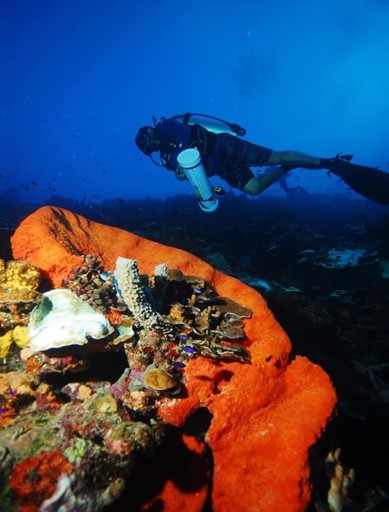
Healthy coral reef in the Bonaire National Marine Park. Photo © Alcides Falanghe
The invasive Indo-Pacific lionfish (Pterois volitans and Pterois miles) was first reported in Bonaire’s waters in 2009 and has since become firmly established. Nowadays, it is common for divers on Bonaire’s reefs to encounter this invasive species. This issue is far from being an isolated problem; in less than a decade, lionfish have become established along the Southeast U.S and the Caribbean, as well as along the northeast coast of Brazil and the Fernando de Noronha archipelago. Lionfish are thriving and have surpassed some native species in certain locations. The lionfish invasion, which many believe is to blame on aquarium enthusiasts releasing unwanted lionfish, is reported as one of the most rapid invasions in history. Several factors have contributed to the proliferation of lionfish: the lack of natural predators in their invasive range; their generalist diet; their ability to adapt to many habitats; and their prolific rate of reproduction.
By competing with native species for food or space, invasive species can cause significant changes to the physical environment and potentially lead to extinction of native species. Invasive species are especially an issue for island environments where native species have evolved in isolation and are more vulnerable to introduced predators. Lionfish are a major threat to reef ecosystems because they decrease the survival of a wide range of native reef animals via both predation and competition. They can also trigger an increase in algal growth by preying on ecologically important herbivore species that keep seaweeds and macroalgae from overgrowing corals. This is of great concern for Bonaire’s reefs, which are some of the most diverse and healthiest in the Caribbean region. The presence of lionfish is also an important concern for Bonaire’s economy, as it has the potential to drastically reduce local fisheries and affect revenue from the tourism industry. Additionally, lionfish threaten the health and safety of visitors, locals, and park staff because their venomous spines can inflict a painful sting and result in serious health complications.
Actions taken
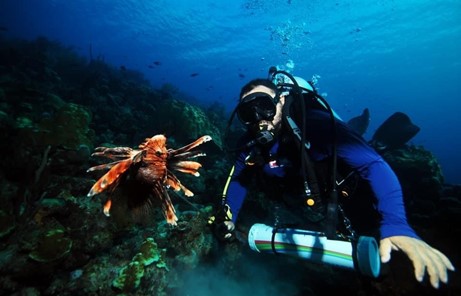
Lionfish are caught by spearfishing. Photo © Alcides Falnghe
Faced with the arrival and rapid population growth of the lionfish, the Stichting Nationale Parken Bonaire (STINAPA Bonaire), a nongovernmental organization that manages the Bonaire National Marine Park, quickly sprang into action to curb the invasion and protect native fish communities within the Bonaire National Marine Park. Completely eradicating lionfish is not possible because the species is highly competitive, and it would require a high level of human resources. The aim is therefore to actively control population numbers of the invasive species through periodic and repeated removal efforts, thus reducing the lionfish population to a level where the impact on native reef fish communities is minimized and the spread of lionfish to previously unoccupied areas is diminished. The removal program relies on volunteers using spear guns. In the Bonaire National Marine Park, h spear guns have proven to be the best technique to collect lionfish. While spearfishing is illegal in Bonaire, participating volunteers are provided with special permits, allowing the spearing of lionfish using Eradicate Lion Fish (ELFs) by local authorities. Roughly 40 ELFs are provided each year to volunteers.
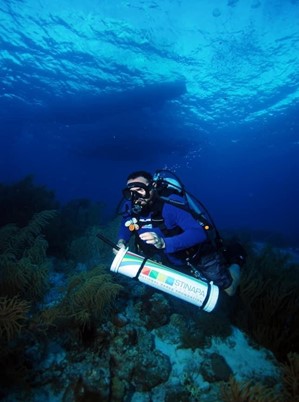
Surveying lionfish. Photo © Alcides Falanghe
So far, around 500 local volunteers have been trained and licensed to hunt and kill lionfish. Volunteers can take lionfish hunting courses at local dive shops and then apply for an ELF through STINAPA. Roughly 50 volunteers are active in the lionfish control program. STINAPA’s Junior Rangers are also involved in the program. Some Junior Rangers have received lionfish education, and others over the age of 18 have received training on lionfish removal. These Junior Rangers are helping communicate the lionfish threat among their peers and sharing the need for a proactive approach.
STINAPA Bonaire has also established important partnerships. They collaborated with Bonaire’s Council on International Educational Exchange Research Station (CIEE) to ensure that lionfish data are processed and analyzed. So far, more than 5,000 lionfish have been handed off to CIEE, with research focusing on vital statistics such as the size and weight of lionfish, sexual maturity, feeding preferences, and habitat and depth preferences. This partnership ended around 2018 when CIEE closed, but STINAPA continues to conduct annual monitoring. Monitoring lionfish density involves taking transects of 50 meters x 2 meters at three different depths (15 m, 25 m, and 35 m) across 24 dive sites. The populations have been stable so far, with negligible differences over the years. STINAPA also partners with the Dutch Caribbean Nature Alliance (DCNA). The initial purpose of the partnership was to hold workshops to educate dive operators and the general public about why and how to control lionfish. Since that public awareness goal has been met, STINAPA and DCNA have jointly developed an innovative tool for lionfish control: a smart phone app whereby Bonaire’s lionfish hunters can add the location and details of lionfish caught, escaped, or seen during a dive. This data can then be viewed on a live map. The goal is to create a centralized location for all collected data to show a comprehensive picture to anyone interested. Additionally, STINAPA has an active Facebook group, Bonaire Lionfish Hunters, where volunteers can provide updated information about where they are seeing lionfish and similar information. STINAPA also uses this page to communicate with volunteers.
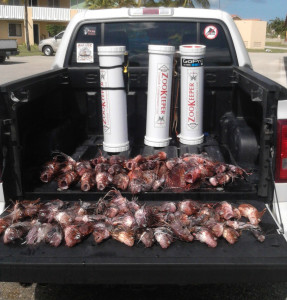
Results of volunteer lionfish collecting. Photo © Larry Holling
How successful has it been?
A study took place in 2011 to determine the effectiveness of lionfish removal efforts within the Bonaire National Marine Park. Differences in the density and biomass of lionfish were compared between areas where lionfish were directly targeted during removal efforts and areas where they were not. Results showed that the local density and biomass of the invasive lionfish in fished locations in Bonaire was 2.76 times lower than in unfished areas in Curaçao. This study showed that continued removal efforts are effective at reducing the local density and biomass of invasive lionfish. It also showed that using volunteer divers can be an effective means in controlling lionfish populations, as large quantities of lionfish are being removed. However, these lionfish removal efforts can only target areas that can easily be accessed by divers; a number of sites that are difficult to access are not being controlled. In 2013, when Bonaire’s deep reef was explored as part of the Bonaire Deep Reef Expedition, lionfish were observed as deep as 165 meters. Therefore, unless lionfish in these hard-to-access areas can be targeted, the effects of removal efforts will continue to be offset. A pilot study was developed to test the use of deep-water traps to control lionfish in this area, but the initial study showed high potential for bycatch and therefore was not implemented on a wider scale.
STINAPA Bonaire’s partnerships for this project have been a huge success. The thousands of lionfish that have been analyzed by the Council on International Educational Exchange Research Station now represent one of the largest lionfish datasets in the Caribbean. STINAPA’s monitoring program has been ongoing since 2011, making it among the most consistent lionfish monitoring programs in the Caribbean. Thanks to the ongoing monitoring and research carried out on lionfish, managers of the Bonaire National Marine Park can better forecast the impact that lionfish will have on native fish populations and therefore develop more effective management plans. The research has also been a key asset in educating both Bonaire’s local population and visitors about the invasion. Research findings are shared via articles in newsletters and on social media, as well as through public lectures. They are also shared with Bonaire’s youth through lectures and hands-on workshops in local schools. Prior to the 2020 global COVID-19 pandemic, STINAPA conducted annual public lectures to share the results of the annual monitoring efforts with volunteers and the local community.
Lessons learned and recommendations
- Due to the nature of the lionfish invasion, a larger community effort is needed to increase the chances of more successful removal.
- Setting up an efficient research program is crucial to the successful management of lionfish. Data on lionfish within the infested marine environment will help resource managers make informed decisions.
- Extensive research on the subject at hand is also vital in explaining and gaining the trust of local stakeholders. If they see that research clearly supports community needs, they are more likely to comply with it.
- Monitoring (pre- and post- infestation) is essential to assess the extent of the infestation so that management strategies can be adapted to respond to the level of threat.
- A well-informed community is key in the fight against invasive species.
- Due to the highly mobile nature of the lionfish invasion, complete eradication of the species is extremely difficult. Efforts should instead focus on actively managing lionfish in island waters.
- Build partnerships with restaurants that can offer lionfish on their menus. Volunteers can then continue to supply the restaurants with lionfish.
Funding summary
The program costs USD 7,000-10,000 per year.
Lead organizations
Stichting Nationale Parken Bonaire
Council on International Educational Exchange Research Station
Dutch Caribbean Nature Alliance
Resources
Read the Honduras Lionfish Case Study
Effectiveness of Lionfish Removal Efforts in the Southern Caribbean
Invasive Indo-Pacific Lionfish Reduce Recruitment of Atlantic Coral-reef Fishes
The Role of Volunteer Divers in Lionfish Research and Control in the Caribbean
Biology, Ecology, Control and Management of the Invasive Indo-Pacific Lionfish

